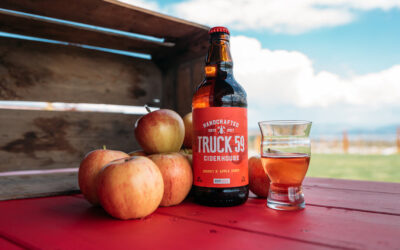From the image of screw caps to how long a wine should be laid to rest in a cellar, there are a lot of myths floating around about wine.
Everybody who enjoys wine seems to have their own thoughts on what is right and wrong, what distinguishes a good wine from a bad (hint: it isn’t the price tag!) or how to treat your wine once you have bought it. With reams of — often contradictory — information available on the Internet, it is enough to irritate an oenophile (a fancy word for “serious wine drinker.”)
“There is a lot of misinformation out there, and it is time to bury it in a deep hole somewhere in our vineyard,” says Marcel Morgenstern, co-founder and Sommelier of Burnt Ship Bay Winery in Ontario.
So for #WineWednesday, we bring some of the more common wine myths that Marcel would like to lay to rest for good.
The “legs” tell you about the quality of the wine. First off, the ‘legs’ or ‘wine tears’ are droplets that run down the inside of your glass after you give it a good swirl or as you drink the wine. The more politically correct term for this phenomenon is “tears.” And they have nothing to do with the quality of the wine in said glass. Rather, they have more to do with the alcohol content (higher alcohol means more legs) or the sweetness, as more viscous wines will have slower droplets.
Aging wine is better. Not in every case. Most of the wines you buy are bottled to be enjoyed almost immediately or over the next couple of years. Laying these wines down in your cellar for too long will essentially destroy the wine. Only about 10 per cent of the world’s wine production is meant to be aged for up to five years; a much smaller percentage is meant for aging for more than 10 years.
Screw cap = cheap wine. This is a classic example of old school thinking. Why do we use corks in wine bottles? Because they have been using corks in wine bottles since wine was first put into a bottle. But just because we have always done something a certain way doesn’t mean it’s the only way. To be best preserved, wine needs to be in an airtight container. A screw cap provides exactly that, and quite frankly is vastly superior to a cork that can shrink and break down over time. Some other advantages: you can store the wine standing up and you have easier access in “wine emergency” situations.
Blends are inferior. Another infuriating myth implying that just because the juice from two or more types of grapes is put in the same bottle, the wine is not as good. Blends are a true art form of wine making, allowing the winemaker to apply his or her craft in new and unique ways. And the results are quite often incredible. It is important to know that a lot of the most prestigious and expensive wines in the world are blends.
Decanting wines is only necessary for expensive bottles. Decanting is a process that ‘opens’ up a wine, allowing in air and releasing flavours. Whether you have a $15 entry level wine or a Bordeaux red that was pushing $100, decanting will enhance your wine experience. If you don’t have a decanter handy, swirling the wine in your glass for a while will do the trick … and if nobody is looking, a water pitcher will do just fine.
[downloads ids=”134694″]




0 Comments